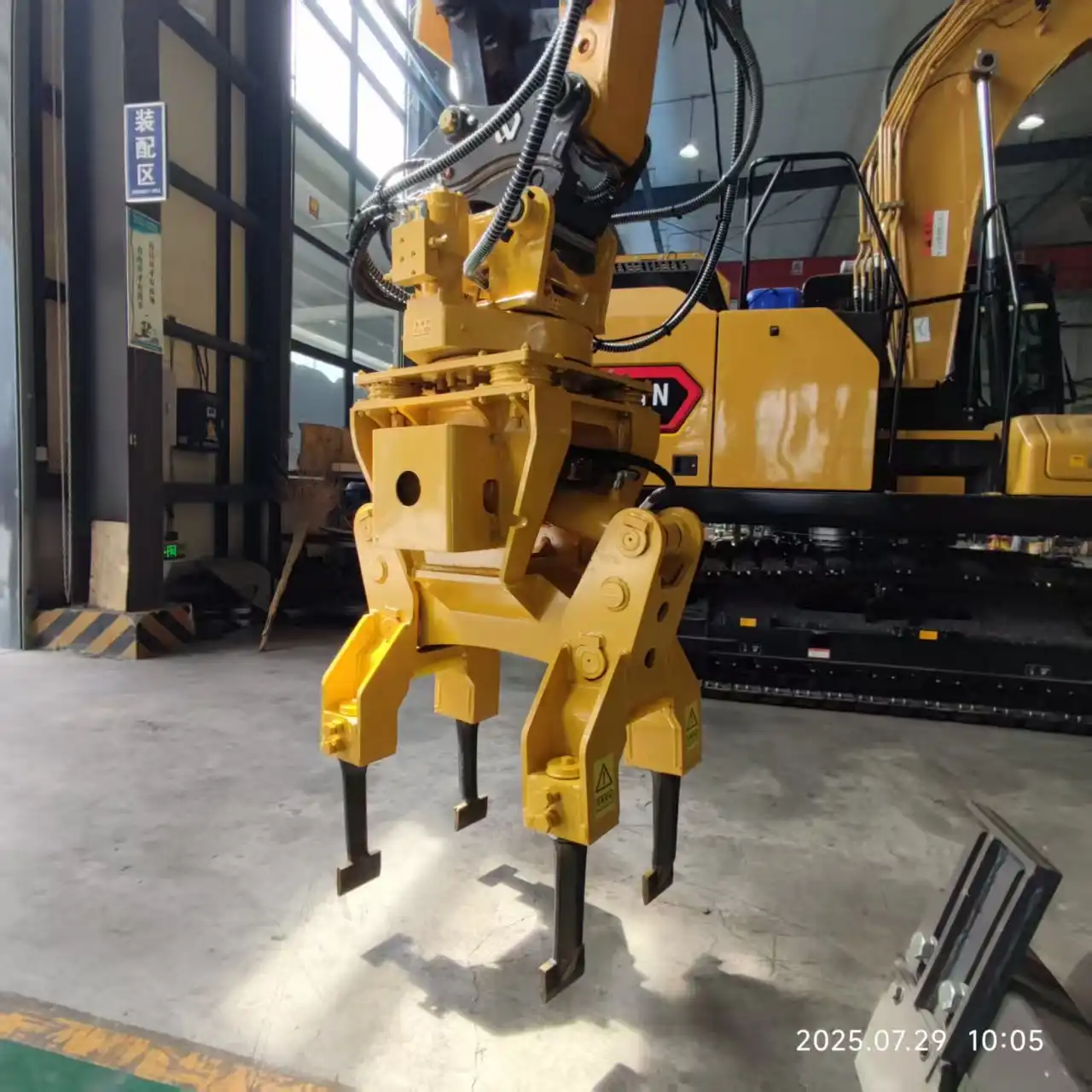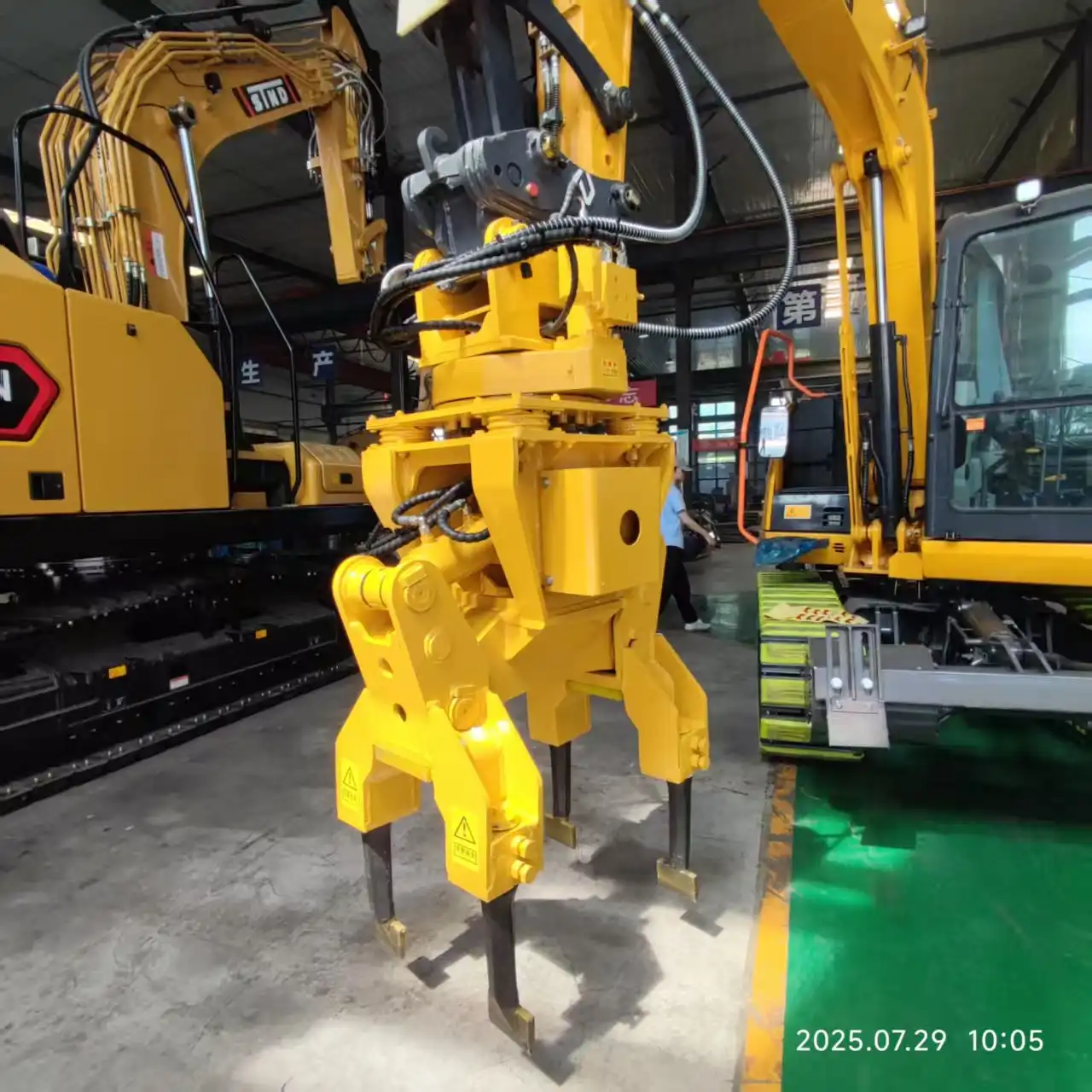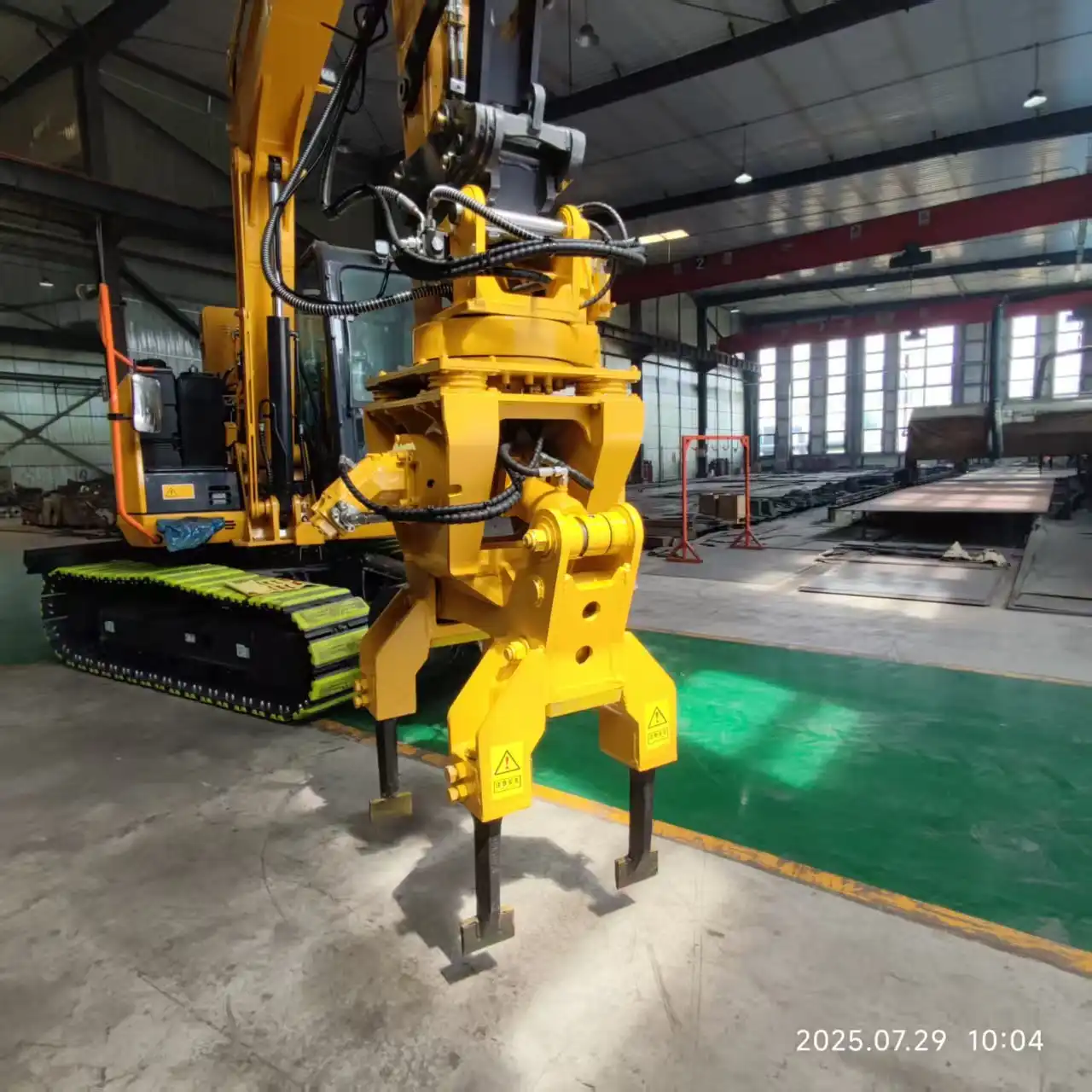What is a tamper used for?
A tamper, specifically a high-vibration hydraulic ballast tamping machine, is a crucial tool in railway maintenance. It's used to compact and stabilize the ballast, which is the crushed stone or gravel that supports railway tracks. These machines ensure optimal track geometry, enhance safety, and extend the lifespan of railway infrastructure. By applying controlled vibrations and pressure, tampers create a solid foundation for tracks, reducing the need for frequent maintenance and improving overall rail system performance.
Compacting Ballast
High-vibration hydraulic tamping for optimal density
The primary function of a high-vibration hydraulic ballast tamping machine is to compact the ballast beneath railway tracks. This process is vital for creating a stable and durable foundation. The machine's hydraulic system powers its tamping units, which penetrate the ballast and apply high-frequency vibrations. These vibrations cause the ballast particles to settle and interlock, resulting in a denser, more compact layer.
The vibration frequency is carefully calibrated to achieve optimal compaction without damaging the ballast or surrounding infrastructure. Modern tamping machines can adjust their vibration settings based on ballast type and track conditions, ensuring consistent results across various railway environments.
Uniform ballast distribution for track stability
Besides compaction, tampers play a crucial role in evenly distributing ballast along the track. This uniform distribution is essential for maintaining proper track alignment and preventing uneven settlement. The tamping process helps fill voids and gaps in the ballast, creating a homogeneous support structure for the rails and sleepers.
By ensuring uniform ballast distribution, tampers contribute significantly to track stability. This stability is crucial for safe train operations, especially at high speeds. A well-distributed ballast bed also helps in load distribution, reducing stress on individual track components and minimizing the risk of track deformation.
Preventing voids and loose areas in railway beds
One of the most critical aspects of ballast tamping is the elimination of voids and loose areas in railway beds. These voids can develop over time due to factors such as vibration from passing trains, weather conditions, and natural settling of the ground. If left unchecked, these voids can lead to track irregularities, compromising safety and ride quality.
High-vibration hydraulic ballast tamping machines are designed to identify and address these problem areas. The tamping units can penetrate deep into the ballast, filling voids and compacting loose material. This process not only improves track stability but also enhances drainage, which is crucial for preventing water-related damage to the track structure.

Correcting Track Geometry And Level
Precision alignment of rails for smoother rides
Beyond ballast compaction, tampers play a vital role in maintaining precise track geometry. Over time, tracks can shift or settle, leading to misalignments that affect train performance and passenger comfort. Modern tamping machines are equipped with sophisticated measurement systems that can detect even minor deviations in track alignment.
Using this data, the tamper can make precise adjustments to the track position. The machine's tamping units work in concert with its lifting and lining systems to shift the track into the correct position. This precision alignment ensures smoother rides, reduces wear on both tracks and rolling stock, and allows for higher operating speeds.
Automatic leveling systems for consistent track profiles
Advanced tamping machines feature automatic leveling systems that maintain consistent track profiles along the entire railway line. These systems use a combination of laser technology, GPS, and computer-controlled operations to achieve remarkable accuracy in track leveling.
The automatic leveling process begins with a survey of the existing track profile. The tamper then calculates the necessary adjustments to bring the track to the desired level. As the machine moves along the track, it continuously adjusts its tamping depth and lifting height to achieve the target profile. This automated approach ensures consistency and efficiency, especially over long stretches of track.
Adjusting horizontal and vertical track parameters
Tampers are capable of adjusting both horizontal and vertical track parameters simultaneously. This dual capability is crucial for maintaining proper track geometry, especially in curves and transitions. The horizontal adjustments, known as lining, ensure that the track follows the correct path and maintains the proper gauge (distance between rails).
Vertical adjustments focus on achieving the correct track elevation and superelevation (banking on curves). These adjustments are critical for safe train operations, particularly at high speeds. By fine-tuning these parameters, tampers help optimize track performance, enhance passenger comfort, and reduce the forces acting on the track structure.

Extending Track Life By Preventing Settlement
Reducing maintenance frequency with quality tamping
Quality tamping is a key factor in extending the life of railway tracks and reducing the frequency of maintenance interventions. By consistently maintaining proper ballast compaction and track geometry, tampers help prevent many of the issues that typically necessitate track maintenance.
Well-compacted ballast resists settlement and lateral movement, maintaining track stability for longer periods. This stability translates to fewer geometry corrections, reduced wear on track components, and extended intervals between major maintenance operations. As a result, railway operators can optimize their maintenance schedules, leading to cost savings and improved track availability.
Minimizing track degradation from heavy rail traffic
Heavy rail traffic exerts significant forces on track structures, potentially leading to accelerated degradation. High-vibration hydraulic ballast tamping machines play a crucial role in counteracting these effects. By regularly restoring optimal track geometry and ballast density, tampers help distribute the loads from passing trains more evenly.
This even distribution of forces helps prevent localized stress concentrations that can lead to premature track component failure. Additionally, well-maintained track geometry reduces dynamic forces generated by train-track interactions, further minimizing wear and tear on both the track and rolling stock.
Enhancing longevity of concrete sleepers and fasteners
The benefits of effective tamping extend beyond the ballast and rails to other critical track components, particularly concrete sleepers and fasteners. By maintaining proper support and alignment, tampers help ensure that these components are subjected to their intended loads and stresses.
Consistent ballast support reduces the risk of sleeper cracking or deterioration due to uneven loading. Similarly, proper track geometry helps prevent excessive stress on fastening systems, extending their service life. The overall result is a more durable track structure that requires fewer component replacements over its lifetime.

FAQ
1. How often should ballast tamping be performed?
The frequency of ballast tamping depends on various factors such as traffic volume, track condition, and environmental factors. Typically, high-traffic mainlines may require tamping every 1-3 years, while less-used tracks might need it every 3-5 years. Regular track inspections help determine the optimal tamping schedule.
2. Can tamping machines work on different types of track?
Yes, modern tamping machines are versatile and can work on various track types, including ballasted tracks with wooden or concrete sleepers, as well as tracks with different rail profiles. Some specialized tampers are designed for specific applications like switches and crossings.
3. How does weather affect the tamping process?
Weather conditions can impact tamping effectiveness. Extremely wet conditions can make ballast less responsive to compaction, while very dry conditions might require additional measures to prevent dust. Most tamping operations are planned with consideration for optimal weather conditions.
4. What is the difference between spot tamping and continuous tamping?
Spot tamping focuses on correcting specific problem areas in the track, while continuous tamping involves treating longer sections of track systematically. Continuous tamping is generally more efficient for maintaining overall track quality, but spot tamping can be useful for quick repairs.
5. How do tamping machines contribute to railway noise reduction?
By maintaining proper track geometry and ballast compaction, tamping machines help reduce train-induced vibrations and noise. A well-maintained track results in smoother train operations, which can significantly decrease noise levels, especially in urban areas.
As railway technology continues to advance, tamping machines will likely evolve, offering even greater precision and efficiency in maintaining the backbone of our rail transportation systems.
China High-Vibration Hydraulic Ballast Tamping Machine
Tiannuo Machinery, a leading manufacturer in China, offers state-of-the-art high-vibration hydraulic ballast tamping machines. These machines are part of a comprehensive range of railway maintenance equipment, including sleeper changing machines, screening machines, and slag cleaning machines. Tiannuo's tamping machines are designed for optimal performance, featuring adjustable tamping clamping ranges and compatibility with various track gauges. For inquiries about their railway maintenance solutions, interested parties can contact us at boom@stnd-machinery.com.
References
- Railway Track Maintenance Handbook
- Modern Railway Track Engineering
- Ballast Tamping: Best Practices and Technologies
- TianNuo Machinery Official Website
- International Railway Journal
- Railway Technology Today
About Author: Arm
Arm is a leading expert in the field of specialized construction and railway maintenance equipment, working at Tiannuo Company. Tiannuo specializes in manufacturing a wide range of products, including railway maintenance equipment like railway sleeper changing machines and screening machines, excavator modification equipment such as excavator lifting cabs, various engineering arms for excavators, excavator accessories like digging buckets, and engineering vehicle auxiliary equipment like loader buckets.

